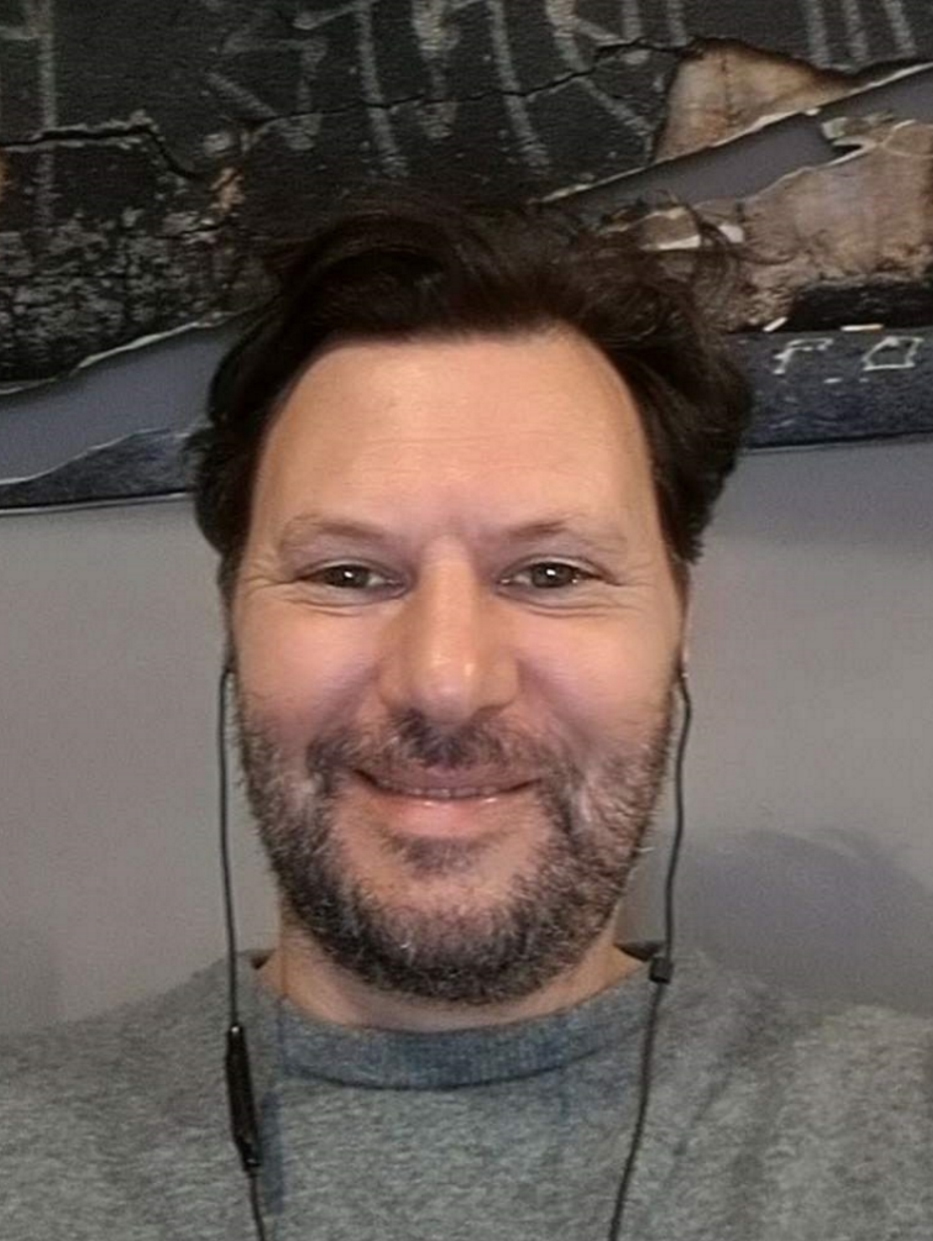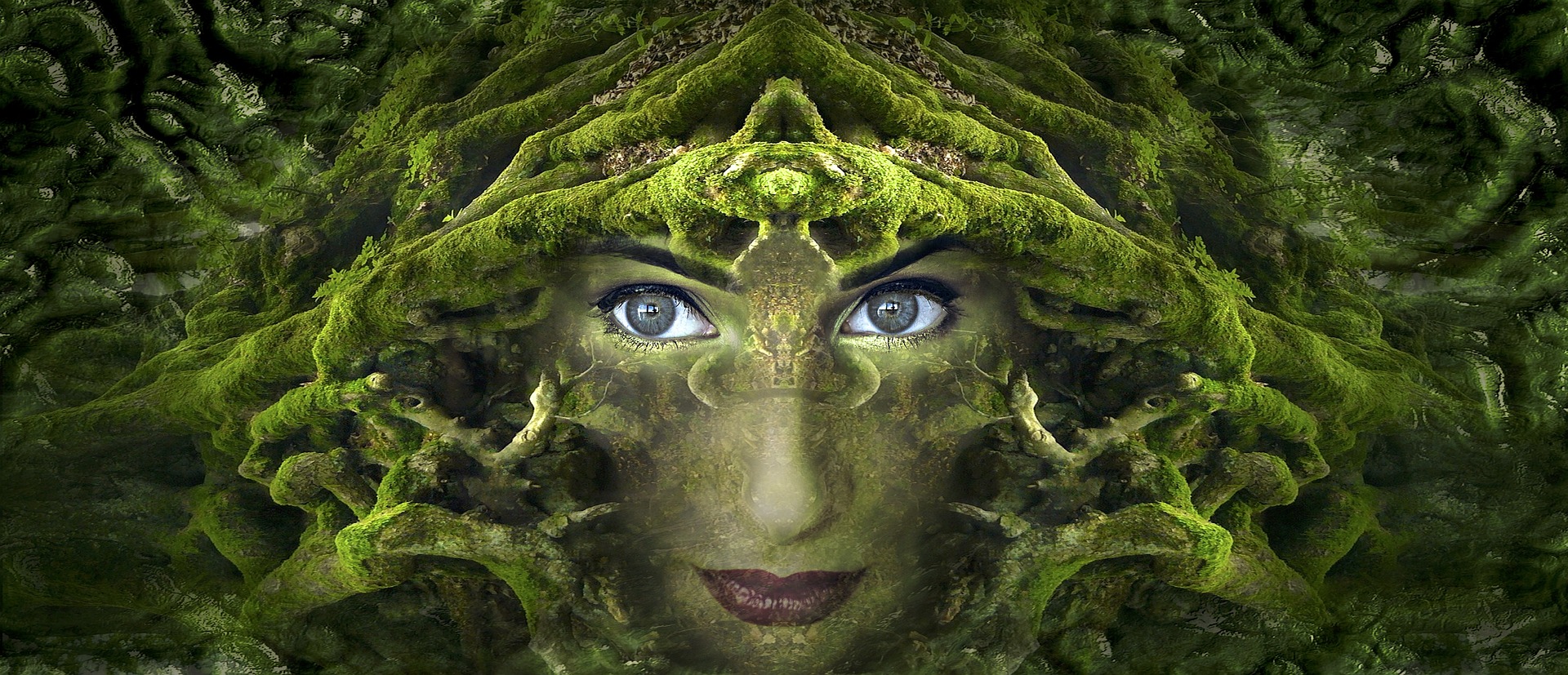
“We are seeing the emergence of a new image of the psyche, and with it an extraordinary worldview that combines breakthroughs at the cutting edge of science with the wisdom of the most ancient societies [1].…Up to now, Newtonian science has been responsible for creating a very limited view of human beings and their potentials.” [2]
~ Stanislav Grof, The Holotropic Universe
The discussion of consciousness is troublesome.
Academia calls it the “The Hard Problem”.
Oh yeah, it’s that troubling. But that’s only because consciousness can’t be measured. And scientists love to measure shit.
Not only is consciousness unmeasurable but by its very nature, nature is complex.
But here’s the good news: consciousness is observable. You can see it in the thoughts, emotions and behaviours you experience every day.
Yeah, that consciousness.
But the hard problem seems to be, where does consciousness originate from and how does it influence our thoughts, actions and emotions?
I’ve had a crack at explaining why in the following content. I seek to explain:
Strap in.

A neuroscientist once told me: “The collective unconscious doesn’t exist”. I didn’t bother to convince him otherwise. At the time, I didn’t have enough knowledge or evidence to debate his opinion with any real vigour.
But deep down, I knew it was there. I had experienced it. I had felt it!
The opinion of the neuroscientist in question was straight out of the mechanistic Newtonian science Stanislav Grof speaks of in the leading quote. By the very nature of his job, the neuroscientist had seen the brain at work through neuroimaging.
The technical behaviour of the brain cannot be questioned.
But dogma can shape a person’s worldview.
It would appear that Newtonian-Cartesian science is turning out to be a pile of old dogma academia is refusing to shake off their shoes.
Fortunately, open-minded researchers are taking the opportunity to peer into the quantum world with great gusto. And the mechanics of the universe are throwing up all kinds of questions to which scientific dogma has a scant response.

Consciousness has been slid under the microscope.
Thought leaders in the field of consciousness research are challenging established views — together with neuroscientists and their fancy technology. Because it turns out, that consciousness does not originate in the brain.
So, where does consciousness originate from?
Consciousness is regarded as: “Internal knowledge or conviction; the state or fact of being mentally conscious or aware of something”. [3] It plays a lead role in how we view the world, interpret reality and interact with our environment.
But that description is more befitting of conscious awareness. Consciousness as a whole has a much broader meaning — because our conscious awareness is influenced by our personal unconscious and the collective unconscious.
One of the key ways in which consciousness shapes our worldview is by influencing our beliefs and attitudes and how we respond to the information that we receive from our environment.
For example, someone with a strong sense of self-awareness may be more open-minded and receptive to new ideas. On the other hand, someone with concrete beliefs is generally closed off to outside opinion and more inclined to resist, alternative ideas or new experiences.

Or someone who has strong opinions and is highly conscious of their biases and prejudices will accept information that reinforces their beliefs but will be more critical of the information that runs contrary to ingrained biases.
Meanwhile, someone who is less self-aware may be more likely to accept information at face value without questioning its validity, accuracy or relevance.
How consciousness shapes our worldview does not have many grey areas. Until that is, you start discussing the origins of consciousness and what it actually is.
This is when the room becomes divided in the halls of academia. World views are at stake.
Shall we examine what we do know?
The established view is that consciousness emerges in our brains when our sensory organs receive information from our environment.
Information taken from our learned experiences is then stored in “mental memory banks” which we can access. At least sometimes. Many of the experiences and information absorbed by our senses are often blurred, skewed or forgotten.
Sometimes, the information doesn’t even make it into the memory banks at all. This is what Sigmund Freud called ‘repression’.
Freud’s view of the unconscious is another established protocol. Psychologists estimate that between 90-95% of the decisions we make every day are unconscious — that’s to say they are stored in the “subconscious”.
N.B. Psychologists use the terms unconscious and subconscious interchangeably. They essentially mean the same thing, even though, in my opinion, they shouldn’t. The subconscious and the unconscious have two different functions which are beyond the scope of the article, but you can read about them in the article: Subconscious v Superconscious: What’s The Difference?
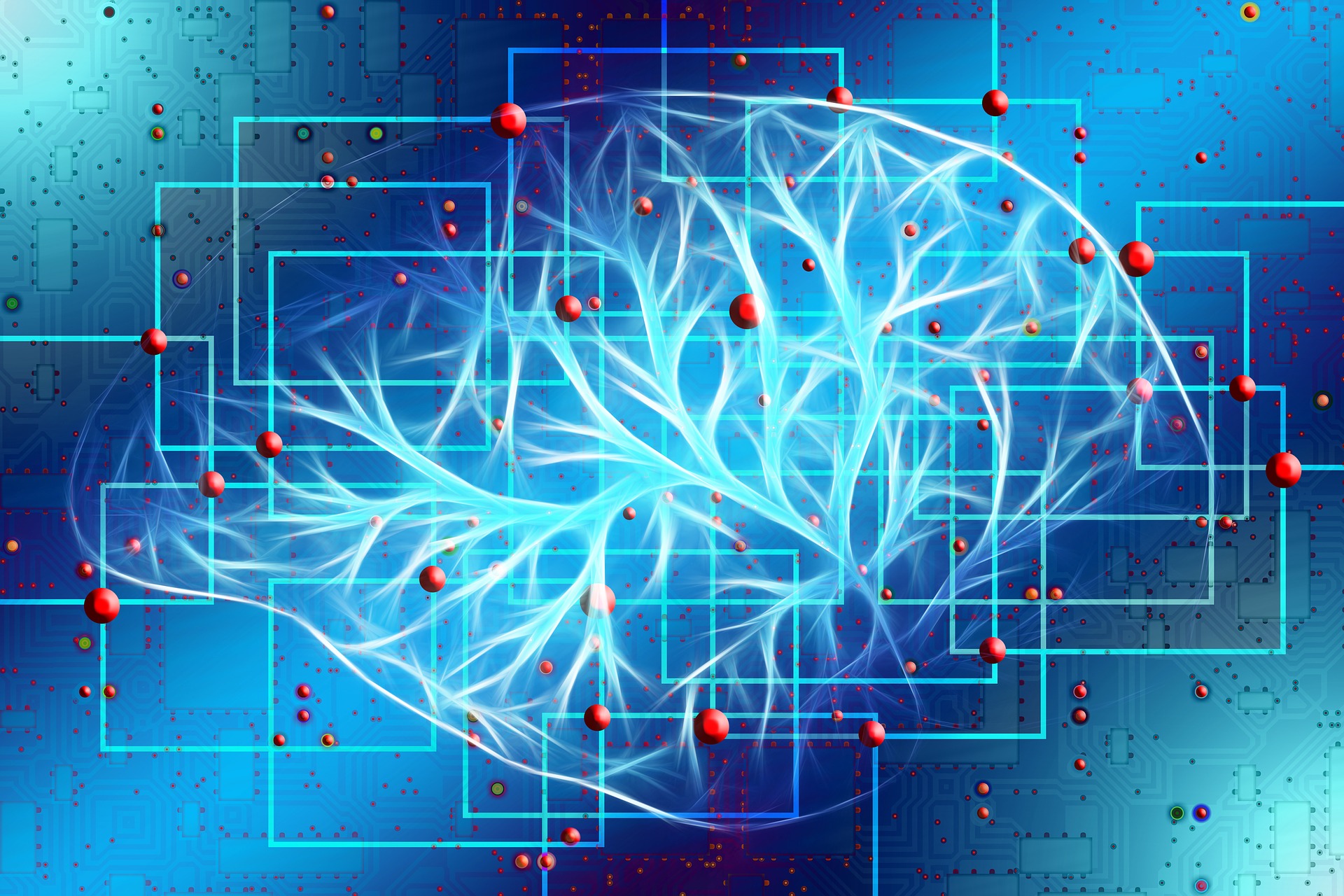
Ordinarily, memories that are stored in the subconscious emerge into conscious awareness every day or fairly frequently. We make a decision based on that information. Our habitual nature is the result of stored memories.
Master Mind Content calls this function of Mind, subconscious programs.
We can also access some memories from our past. They may not be in conscious awareness every day but are either triggered by something in the environment or a nostalgic conversation. Other times they pop up randomly.
The function of the psyche is what Jung calls the personal unconscious. They are memories that are created in our past and shape our personality, relationships and view of the world; the types of memories that probably contribute to our subconscious programs.
We also store information from our past that we are totally unconscious of. However, depth psychology and other techniques like meditation and hypnosis have shown that unconscious content can be made available to the conscious mind.
Sigmund Freud called this process repression. When information taken from the environment is “repressed”, some part of the experience is “cut off” from conscious awareness. The information doesn’t make it into the memory banks.
And this is where Newtonian physics falls down in the consciousness conversation. If the nervous system only processes the information it accepts and doesn’t build a synapse for information it rejects, what happens to the split-off consciousness and the energy it drives?
According to Wilhelm Reich, amongst others, repressed consciousness takes on a life of its own and creates a conflict.
Thought-Provoking Quote
“In a patient where part of the personality had failed to go along with the total development toward adulthood, thus remaining in the earlier stage of sexual development. This results in ‘fixation.’ What happens then is this isolated part came into conflict with the remainder of the ego, by which it was held in repression.” [4]
~ Wilhelm Reich, The Function of the Orgasm
This means that unconscious content continues to have an influence on our behaviours — we just don’t know why we do the dumb shit.
This is why psychologists estimate that around 90-95% of the decisions we make every day are unconscious.
For this reason, Master Mind Content include “fixations” as habitual patterns of behaviour and this is a subconscious program the ego identifies with even if you don’t realise why you doing it.

It is this part of our programming that lies behind our destructive habits and behaviours.
This theory contradicts established science that has persisted with the idea that our behaviours are determined by our genes. And the theory is backed by mechanical science that can be measured.
Let’s have a little look at epigenetics. This relatively new field of science is also casting doubt on the old paradigms.
It has been a long-held theory that our behaviours and illnesses are influenced by genetics.
In the last thirty years or so, biologists in the field of epigenetics have found evidence to the contrary. Academia is slowly coming around to accepting this revelation.
They are not helped by the fact that no one has discovered and proven that a single gene is responsible for a specific action.
Epigenetics also supports the theories presented by those pesky consciousness researchers who are hell-bent on destroying another scientific dogma.
One consciousness researcher asks:
Thought-Provoking Quote
“Are genes alone sufficient? Or does development depend on nonmaterial organising principles as well?” [5]
~ Rupert Sheldrake, The Presence of the Past
Epigeneticists show that established theory should be reconsidered when conflicting evidence emerges. History shows that new ideas get shut down. The pig-headed ignorance of academia is pissing off groundbreaking “pseudo-scientists”.
So what’s the new story on genes?
Our cells do play on role in how we behave, but their involvement appears to be mechanical rather than causal. How genes function is determined by the information taken from the environment, processed and stored in said cells.
That is to say, genes only determine our behaviour based on past experiences. And as Freud established, these experiences are stored in the subconscious.
Thought-Provoking Quote
“The part of the human brain that most define us is less a product of the genes with which you started life than of what life has thrown at you. Because it is the last to mature, by definition the frontal cortex is the brain region least constrained by genes and most sculpted by experience.” [6]
~ Robert Sapolsky, Behave: The Biology of Humans at Our Best and Worst
Genes are known to code information that is responsible for producing the proteins that keep us alive like transferring oxygen, pumping blood and digesting food. [7]
But genes don’t determine behaviour. How we react is largely determined by neurochemicals. For example, oxytocin elicits prosocial behaviour and makes us more charitable, Vasopressin enhances paternal behaviours, testosterone boosts impulsivity and risk-taking and so forth.
In other words, cells are programmed by neurotransmitters — chemical messengers that store the information collected by our sensory organs.
Thought-Provoking Quote
“Behaviour is the product of the nervous system, whose actions were shaped by sensory cues minutes to hours before, and how the brain’s sensitivity to those cues was shaped by the hormonal exposure in the preceding hours to days.” [8]
~ Robert Sapolsky, Behave: The Biology of Humans at Our Best and Worst
Let’s take a brief look at how the nervous system works. If you want to go deeper take a look at the article dedicated to the subject, How The Nervous System Works.
Ordinarily, the nervous system is responsible for coordinating and controlling all bodily functions and movements. It is the body’s communication network, transmitting signals between different parts of the body and between the body and the external environment.
But it also plays a role in how we absorb information from the environment and how we subsequently respond to that information through thoughts, emotions and actions.
We take information from our environment through our five senses. The information collected by the senses is processed by cells in the nervous system and rocketed up to the brain.
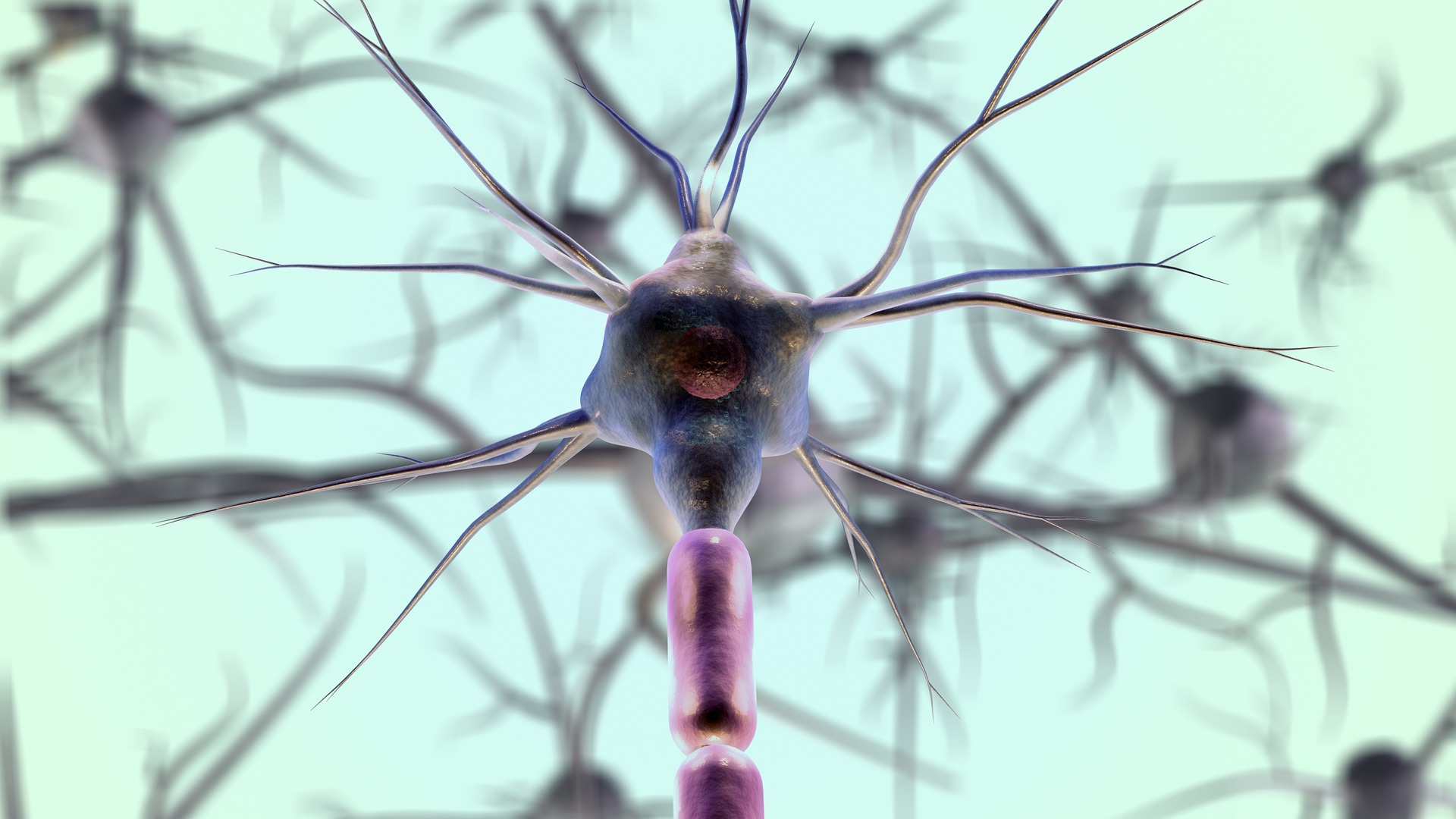
When the information reaches the brain a neurone is fired and a synapse is formed. But before hitting the synapse, a neurotransmitter is released in the pre-synaptic gap. This chemical discharge stimulates an emotion that influences how we feel and behave.
The nervous system consists of two main parts: the central nervous system (CNS), which includes the brain and spinal cord, and the peripheral nervous system (PNS), which includes all the nerves that extend throughout the body.
The CNS is responsible for receiving and processing information from the senses, making decisions, and sending out commands to the PNS to carry out actions. The PNS, in turn, transmits these commands to the muscles, organs, and glands to control their activity.
However, neurotransmitters and hormones are coded for by genes. [9] And there are multiple transcription factors in a cell, each binding to a particular DNA sequence and constituting a particular set of information. [10]
This is how the nervous system creates habits and defence mechanisms. Essentially, this is the habitual mind, or as we call it at Master Mind Content, subconscious programs.
So let’s get this clear. Subconscious programs are formed as a result of personal experiences.
However, we should not forget that our genes are also coded by parents and family ancestry — of which we are unconscious. But they can still affect how we think, feel and act.

So if some of our behaviour stems from genetic transmission, that may mean the motivation behind some of our behaviours is unconscious.
However, epigenetics shows that genes adapt to our environment. That means that behaviours we are coded with through DNA or through experience can change if the information from the environment is contrary to the information in the cell.
This is why many people do not behave exactly like their parents as adults. Most of us develop a personality that is influenced by our peers more than by our parents.
New cells created during neurogenesis can store fresh information which gives rise to the potential for new behaviours, emotions, ideas, attitudes, beliefs and perceptions.
“Most anything you can measure in the nervous system can change in response to a sustained stimulus. And importantly, these changes are often reversible in a different environment.” [11]
~ Robert Sapolsky, Behave: The Biology of Humans at Our Best and Worst
When new information from our environment is received, a new dendritic spine emerges followed by an axon terminal. Within a couple of weeks, the synapse is able to function and stabilise the new memory.
But only if the experience is repeated often enough. The sensory organs have to repeatedly take in the same information for processing before a memory — or subconscious program — is stored.
The forming of memories doesn’t actually require a new synapse, it requires the strengthening of pre-existing synapses that are reinforced over time.
This is why we have to fight habitual behaviours. It’s also important to remember when confronted with the challenge of changing habits. Neuroscientists say what is fired becomes wired.
But the essential “wiring” of the nervous system relies on the cooperation of existing genes. Information that is already stored in the nervous system can determine whether new information is passed further along the line or not.
That means the existing information stored in genes takes precedence in determining the action potential. And because memories are emotionally charged they have more force.
On top of that, we have the battle between the intellect vs instinct to contend with. The intellect is the ego — and the ego responds to subconscious programs.
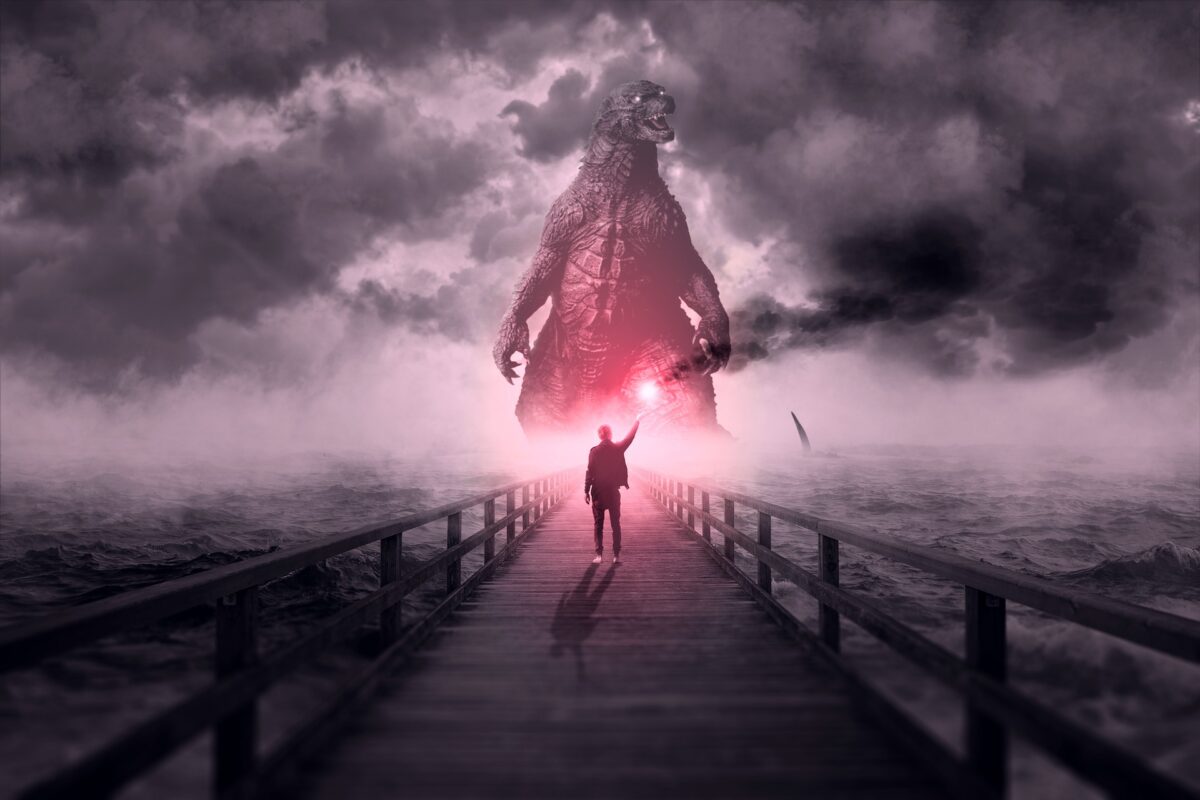
So this is how habits are formed — and why they’re so difficult to break. The emotional pull is more often than not the determining factor in the course of action we take — which in turn influences our thinking.
Does this sound familiar: “I know it’s not good for me, but I need it. It’ll make me feel better.”
Habits do make us feel better because they were designed as survival mechanisms. However, they only offer short-term relief. At some point in the day, or week, the ego is aware that it needs its dose of emotional well-being.
Many of our childhood experiences stored as subconscious programs determine our behaviour. This can either be because we’ve always done it that way, we know we like something, or, as described above we think we need something to get us through the day.
But we are also influenced by unknown subterranean forces. For example, one day we might get angry at something and on another day, we don’t get angry at the same thing.
Consciousness is complex.
Ultimately, consciousness impacts the relationships and experiences we have with our peers and objects in the environment. All these experiences either reinforce existing subconscious programs or create a new synapse which has an alternative outcome potential.
Thought-Provoking Quote
“The environment serves as a “contractor” who reads and engages those genetic blueprints and is ultimately responsible for the character of a cell’s life. It is a single cell’s “awareness” of the environment that primarily sets into motion the mechanisms of life.” [12]
~ Bruce Lipton, Biology of Belief
The information from the environment that is stored in our cells is essentially energy and matter. Einstein showed that energy and matter are the same in his famous equation: E=mc2.
If a cell is matter and processes energy-carrying information from our environment, the action potential must be determined by the information processed in a cell. Over and over again.
In other words, a memory is charged with an emotional reaction. How we behave is determined by memories stored in the subconscious mind.
This means the nervous system is the habitual mind — the store of subconscious programs in the personal unconscious.
But what about the random thoughts we have no conscious experience of? Or how about moments of inspiration, creativity and imagination?
You have thoughts you have no experience of right?
Where are these impressions coming from if they are not programmed in the personal unconscious?
To answer this we must turn to Messrs Feud and Jung.
It’s well established that retrieving repressed consciousness paves the path to healing and psychological development.
This idea was established over 100 years ago by Sigmund Freud, and, in my view, was later enhanced by Carl Jung. I say ‘enhanced’ because Jung had a slightly different perspective to Freud. The Swiss didn’t think that consciousness was limited to personal experience.
Thought-Provoking Quote
“For Freud, accordingly, the unconscious is of an exclusively personal nature, although he was aware of its archaic and mythological thought forms. A more or less superficial layer of the unconscious is undoubtedly personal. I [Jung] call it the personal unconscious. But this personal unconscious rests upon a deeper layer, which does not derive from personal experience and is not a personal acquisition but inborn. This deeper layer I call the collective unconscious. I have chosen the term “collective” because this part of the unconscious is not individual but universal; in contrast to the personal psyche, it has contents and modes of behaviour that are more or less the same everywhere and in all individuals. It is, in other words, identical in all men and thus constitutes a common psychic substrate of a suprapersonal nature which is present in every one of us.” [13]
~ Carl Jung: Vol.9 Part 1, The Archetypes and the Collective Unconscious
Jung’s theory of the collective unconscious clearly divides opinion. Some people simply can’t get their heads around it; mechanistic-reductionist people.
I once had a conversation with a girl who was a recently qualified psychologist. I brought Jung into the conversation and she was completely perplexed by what I was saying, so much so that she gave my friend a look to rescue her.
My friend is not a psychologist but he was educated enough about Jung to engage in a flexible conversation. Meanwhile, the qualified psychologist didn’t utter a word.

The point I was making was that Freud’s model of the psyche was incomplete. It relies solely on personal experience. Like the nervous system. I got the impression Jung’s ideas are not the view most newly qualified psychologists walk out of University with. The girl was polite and wanted to get into a debate.
Or maybe I’d shaken her world view and she didn’t know what to say. I have some Poseidon in me (which is not always a good thing).
Anyway, I digress. How can we explain behaviours that cannot be a result of past experiences?
What about the internal experiences that can’t be learned behaviours? Sometimes we just do things instinctively (and we’re surprised by ourselves!)
Or what about the vivid images in dreams and the mind’s eye? There is also a growing body of evidence coming from studies in psychic phenomena during non-ordinary states of consciousness. The results are quite remarkable.
Freud’s model of the psyche holds a significant amount of sway over the psychoanalytical profession today. That’s not to say Freud’s model is wrong. As I say, it’s incomplete. It only addresses aspects of consciousness that relate to personal experience.
N.B. We could argue that the “innate instincts” of the id share the same function as Jung’s archetypes in the collective unconscious, but that doesn’t appear to be an established view.
Even still, Jung says:
Thought-Provoking Quote
“Instincts are not vague and indefinite by nature but are specifically formed motive forces which, long before there is any consciousness, and in spite of any degree of consciousness later on, pursue their inherent goals. Consequently, they form very close analogies to the archetypes, so close, in fact, that there is good reason for supposing that the archetypes are the unconscious images of the instincts themselves, in other words, that they are patterns of instinctual behaviour.” [14]
~ Carl Jung: Vol.9 Part 1, The Archetypes and the Collective Unconscious
Jung’s model describes three sides of consciousness; conscious awareness, the personal unconscious and the collective unconscious.
Jung’s model of the psyche indicates the consciousness that emerges in our conscious minds cannot only be a product of a learned experience. The Swiss psychoanalyst believed there were psychic phenomena that were inherent and accessible to all human beings.
Thought-Provoking Quote
“The collective unconscious is a part of the psyche which can be negatively distinguished from a personal unconscious by the fact that it does not, like the latter, owe its existence to personal experience and consequently is not a personal acquisition. While the personal unconscious is made up essentially of contents which have at one time been conscious but which have disappeared from consciousness through having been forgotten or repressed, the contents of the collective unconscious have never been in consciousness, and therefore have never been individually acquired, but owe their existence exclusively to heredity. Whereas the personal unconscious consists for the most part of complexes, the content of the collective unconscious is made up essentially of archetypes.” [15]
~ Carl Jung: Vol.9 Part 1, The Archetypes and the Collective Unconscious
Academia argues that “heredity” is information stored in our genes and has simply been handed down through the generations of families by birth.
However, Jung based his opinion on the fact that a young patient of his had drawn symbols in a book from a culture she had no knowledge about. Nor had her parents.
The question is if the information that shows up in the form of images, peculiar thoughts, unique ideas, inspiration and imagination is not a learned experience accessible to conscious thought, where are these thought forms coming from?
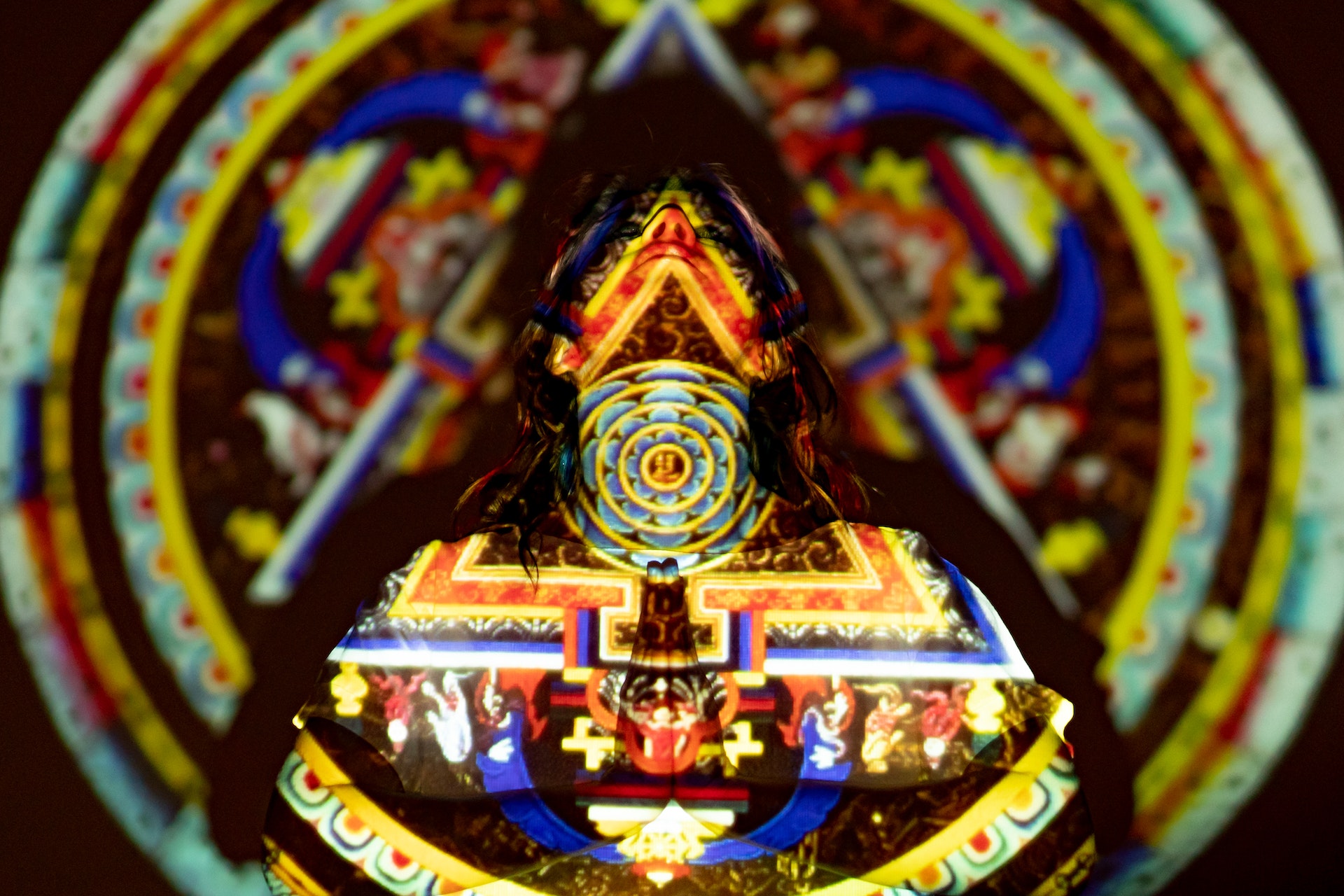
How does a composer write a unique piece of music for example? How did Albert Einstein come up with the theory of relativity? How do we find solutions to problems?
There can only be two possible conclusions; past lives, an idea promulgated by world religions, or another source.
Could systems theory and morphic resonance provide us with an answer? Or is it just pseudo-science?
Today’s consciousness researchers are pushing the boundaries. The mysteries of the universe are unravelling in phenomena that should “drastically revise and expand the limited view of nature and dimension of the human psyche. [16]
David Bohm, a former colleague of Einstein, illustrates that energy, light, and matter are intertwined and cannot be extracted from the whole — the Universe, or “macrocosm”. [17]
Bohm notes:
Thought-Provoking Quote
“Relativity and quantum theory agree, in that they both imply the need to look on the world as an undivided whole, in which all parts of the universe, including the observer and his instruments, merge and unite in one totality.” [18]
~ David Bohm, Wholeness and the Implicate Order
Bohm believes the world we perceive through our senses and nervous systems represents a tiny fragment of reality in a much larger matrix. He proposes that everything we see, and don’t see around us is composed of interference patterns that carry information.
Energy and matter are essentially a microcosm that unfolds the macrocosm. And we’re all a part of the same interconnected source. As Carl Sagan said, and people keep saying, ‘We’re made of stardust.’
The Big Bang says so.
Thought-Provoking Quote
“As integral fields of the holomovement each of us is also a microcosm that reflects and contains the macrocosm.” [19]
~ Stanislav Grof, The Holotropic Universe
According to quantum field theory, there are a series of microscopic fields within matter which exist as quanta of vibratory energy. These vibrating energy fields integrate all material systems and actively shape everything that exists in the universe. [20]
Thought-Provoking Quote
“Vibrating electromagnetic fields underline the functioning of our brains and bodies, ourselves and our molecules. And all around us…All our lives go on within these fields.” [21]
~ Rupert Sheldrake, The Presence of the Past
Rupert Sheldrake is another thought leader in the academic community who has performed groundbreaking studies which have produced compelling evidence of supreme intelligence.
The Cambridge-tutored biologist postulates that “memories are not stored in the brain: the brain tunes into them” via morphic resonance. The brain is more like a TV receiver than a recording system. [22]
Needless to say, Sheldrake’s theory is not well received and has been rubbished as pseudoscience.
Thought-Provoking Quote
“When the hypothesis was first published, it was inevitably controversial. I was not surprised by disagreement, but I was surprised – and relieved – by the fact that even my most vociferous critics came up with no evidence against the hypothesis, nor pointed out any serious logical flaws. Instead, they dismissed the hypothesis as unnecessary.” [23]
~ Rupert Sheldrake, The Presence of the Past
Yet academia hasn’t found evidence to the contrary. The Newtonian-Cartesian model can’t explain this phenomenon. But what can’t be explained can easily be brushed aside and rubbished as pseudoscience.
But the thing is, the idea of energy fields is not a new idea. It’s just been ignored — for over 100 years now. Even Einstein said that vibratory fields cannot be explained in terms of matter.
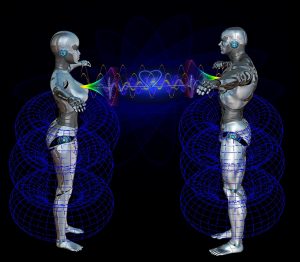
Academia keeps trying, but they keep running into dead ends. People just hate to admit their worldview is wrong. Especially when they’re indoctrinated into a dogma.
System theory, on the other hand, does explain the formation of matter.
God damn those pesky pseudoscientists.
At the beginning of the 1920s, Hans Spemann, Alexander Gurwitsch, and Paul Weiss proposed that morphogenesis in living organisms is organised by fields. [24]
Paul Weiss wrote:
Thought-Provoking Quote
“A field is the condition to which a living system owes its typical organisation as its specific activities. These activities are specific in that they determine the character of the formations to which they give rise… Inasmuch as the action of fields does produce spatial order, it becomes a postulate that the field factors themselves possess definite order.” [25]
~ Paul Weiss, Principles of Development
Bohm agrees that the mind is capable of responding to more than personal memory. He likens the mind to a radio receiver. When the signal becomes sensitive to a radio wave, its internal structure of sound waves brings meaningful order.
The human structure works in a similar way. When the information stored in our nervous system corresponds with the information we are receiving from the environment we react accordingly.
Thought-Provoking Quote
“One might then suggest that in intelligent perception, the brain and nervous system respond directly to order in the universal and unknown flux that cannot be reduced to anything that could be defined in terms of knowable structures…If intelligence is to be an unconditioned act of perception, its ground cannot be in structures such as cells, molecules, atoms, elementary particles, etc.” [26]
~ David Bohm, Wholeness and the Implicate Order
Bohm argues the existing paradigm doesn’t hold up. He basically makes the point I outlined above with regard to the nervous system; if consciousness is determined by “information stored up in memory…it will have to have the mechanical nature of anything that can be assimilated in the basic mechanical character of the process of thought.” [27]
Yet, we all know from personal experience that thought forms appearing in the mind are not always something we have experienced. Or simply cannot have experienced it.
Imagination is a prime example. Some people are not able to imagine a situation they have never experienced, but other people can. The reason for this may be answered by Jung’s collective unconscious and the corresponding theory of the day — morphic resonance.
Thought-Provoking Quote
“Morphic fields, like the known fields of physics, are non-material regions of influence extending in space and continuing in time. They are localised within and around the systems they organise. When any particular organised system ceases to exist – as when an atom splits, a snowflake melts, an animal dies – its organising field disappears from that place. But in another sense morphic fields do not disappear: they are potential organising patterns of influence and can appear again physically in other times and places, wherever and whenever the physical conditions are appropriate. When they do so they contain within themselves a memory of the previous physical existences.” [28]
~ Rupert Sheldrake, The Presence of the Past
This description explains what happens to repressed consciousness. The energy in which the information the brain cuts out of conscious awareness loiters around in the energy field — known as the aura or panic body in spiritual parlance.
Think about this logically for a second. The receptor cells of our body absorb information from the external world. The nervous system rejects the information from entering our inner world. Thus the cut-off consciousness has to remain outside the body.
The nervous system is basically saying, ‘You’re not on the list, you’re not coming in.’
The energy field, although a unified whole, must also have individual departments which store relevant information, or memory, for every system. Like a cosmic filing system (or Kingdom of Heaven). Our personal unconscious, therefore, remains intact in the morphic field as a fragment of consciousness that is waiting to be processed.
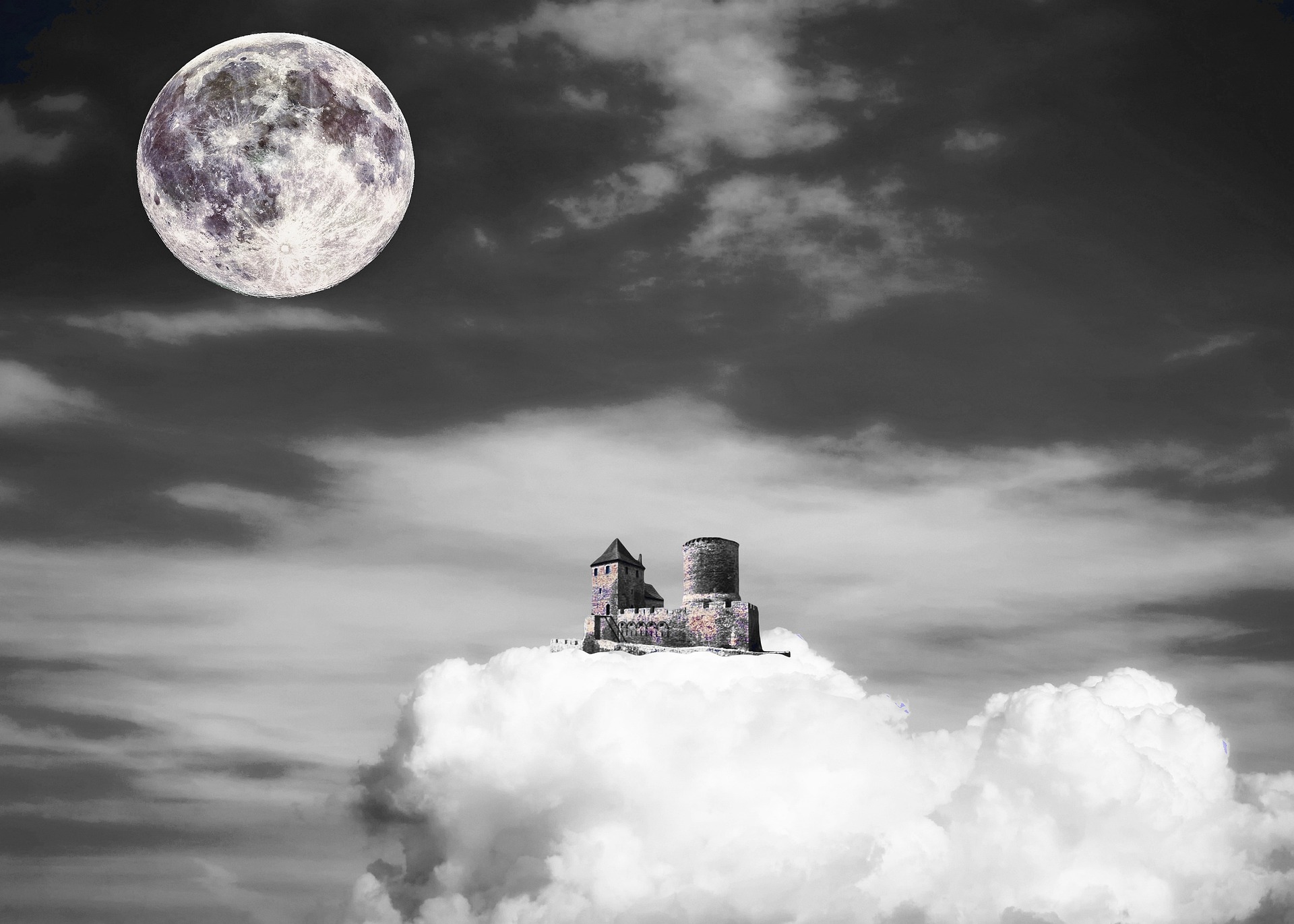
This is why I feel the subconscious and the unconscious cannot be used interchangeably. The nervous system creates subconscious programs but at the same time separates us from our whole selves.
The ego prevents us from achieving wholeness. Wholeness means healing. So the ego is making you ill.
The aim of the Essential Self-Development at Master Mind Content is to identify consciousness that has been split off and integrate the archetypal function into your conscious personality.
Consciousness researchers are increasingly finding evidence that supports Jung’s view. Every thought that passes through an individual’s mind is “transmitted as perception-contents through experience.”
In our “very structure is written the history of mankind” Jung wrote in 1923. [29] His view had not changed in 1959. “…we are not of today or of yesterday. We are of an immense age,” he told the BBC’s, John Freeman.
Whilst Jung acknowledged the unconscious clearly does have a personal nature, he was convinced that we are influenced by an unconscious content that is common to all mankind.
Thought-Provoking Quote
“But this personal unconscious rests upon a deeper layer, which does not derive from personal experience and is not a personal acquisition but inborn. This deeper layer I call the collective unconscious. I have chosen the term “collective” because this part of the unconscious is not individual but universal; in contrast to the personal psyche, it has contents and modes of behaviour that are more or less the same everywhere and in all individuals. It is, in other words, identical in all men and thus constitutes a common psychic substrate of a suprapersonal nature which is present in every one of us.” [30]
~ Carl Jung: The Archetypes and the Collective Unconscious
This view has been given a lot of scientific weight by the Czech-born psychiatrist Stanislav Grof. His research shows that people can access memories of their birth. And also recall past lives.
What the research doesn’t show precisely is whether the past life vision was lived by the individual — as religions claim — or whether the memory is accessed from the morphic field.
If it was lived by the individual and the “soul” reincarnates, then the morphic field may not have any weight. And vice versa. Are we individual systems that continue to live life until we become whole? Or is all the information we need to know about mankind stored in atoms in the morphic field?
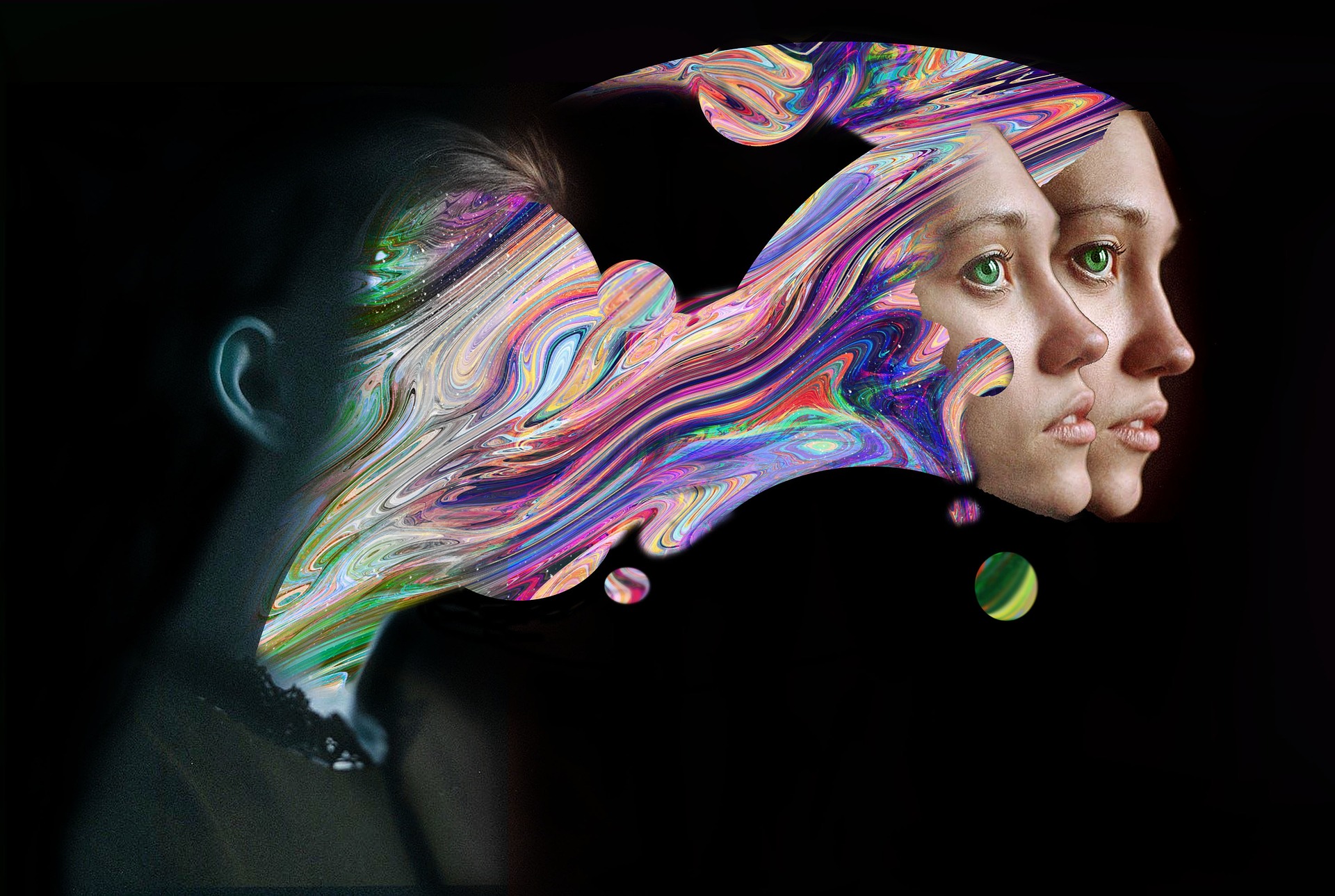
This is why consciousness is called the hard problem. Sometimes there is no definitive answer.
Many of the experiences Grof recorded in his patients were traumatic, or images that have some form of traumatic association attached to them. That means they could quite possibly be split-off fragments of consciousness an ancestor’s nervous system discarded way back when.
If we are to take the mechanistic view, this aspect of consciousness will, therefore, remain outside the scope of conscious awareness within a family bloodline. But that information would be programmed in the genes of the descendants the dissociated consciousness was passed down to.
So does everybody suffer the same neurotic conditions as their parents, siblings, aunts, uncles and cousins?
Apparently not. The conclusion is that a family does not get all the genes from their parents but some of them. According to the mechanistic view, the genes we inherit are random.
And everybody knows that nature is random. It doesn’t grow in perfectly symmetrical patterns or functional shapes at all.
Errrrm….talk about square pegs in round holes!
If we are to take the established view, consciousness is passed down by either side of the family. But surely the healthy genes would be the winner. Survival of the fittest and all that.
So, why are children born with diseases neither of their parents have? It doesn’t make sense.
Another important discovery that came up in Grof’s research was that memories of emotional and physical experiences are stored in the psyche and are not isolated bits and pieces. They form complex constellations, which he calls “systems of condensed experience” or COEX. [31]
The way in which Grof describes his thinking behind COEX systems fits the role played by the nervous system.
Thought-Provoking Quote
“There is a constant interplay between the COEX Systems of our inner world and events in the external world. External events can activate corresponding COEX systems within this. Conversely, COEX systems help shape our perceptions of the world, and through these perceptions react in ways that bring about situations in the external world that echo happenings in our COEX systems.” [32]
~ Stanislav Grof, The Holotropic Universe
Condensed experiences affect every area of our emotional lives. Each COEX system has a characteristic theme such as significant events that were humiliating, degrading, or shameful. [33]
COEX systems also explain why we develop psychosomatic symptoms such as back pain even when we haven’t been lifting anything. I used to get a random pain in my knee every now and then. It cleared up about two years ago. I wish I knew why.
COEX systems also influence how we perceive ourselves, consciously and subconsciously. Grof believes these systems are the foundation for “difficulties we have relating to ourselves and other people.” [34]
Deeper into his research, Grof discovered his “training as a psychiatrist” only explains two-thirds of the psyche. As I mentioned above, the third has been omitted from mainstream psychology because the established view leans more towards Freud than Jung.
In his own words, Grof says:
Thought-Provoking Quote
“I see consciousness and the human psyche as expressions and reflections of cosmic intelligence that permeates the entire universe and all of existence. We are not just highly evolved animals with biological computers embedded inside our skulls; we are also fields of consciousness without limits, transcending time, space, matter, and linear causality. As a result of observing literally thousands of people experiencing non-ordinary states of consciousness, I am now convinced that our individual consciousness connects us directly not only with our immediate environment and with various periods of our own past, but also with events that are far beyond the reach of our physical senses, extending into other historical times, into nature, and into the cosmos.”
~ Stanislav Grof, The Holotropic Universe
So back to Jung.
So far we have established that consciousness shapes our worldview by extracting information from our environment. i.e. the experiences we have in life. What we see, hear, touch, taste and smell determines what we like and don’t like, and gives us perspective.
Our worldview is also shaped by direct experiences, the information of which is stored in our subconscious as memory. The nervous system creates these memories by passing information extracted from the environment from cell to cell so that the body can react in some way.
How we react is typically founded upon a decision we make, the information of which is pulled out of the filing cabinet of stored memories in the personal unconscious.
We have also established that the nervous system is able to dissociate or repress information absorbed from our environment. It does this by rejecting the chemical messenger (neurotransmitter) to pass through the axon terminal. Therefore, a synapse cannot be extended and memory cannot be formed.
It is established that disassociated consciousness is the underlying cause of neurotic behaviour and psychosis. Jung noted that “Many complexes are merely split from consciousness because the latter [the ego] preferred to get rid of them by repression.” [35]
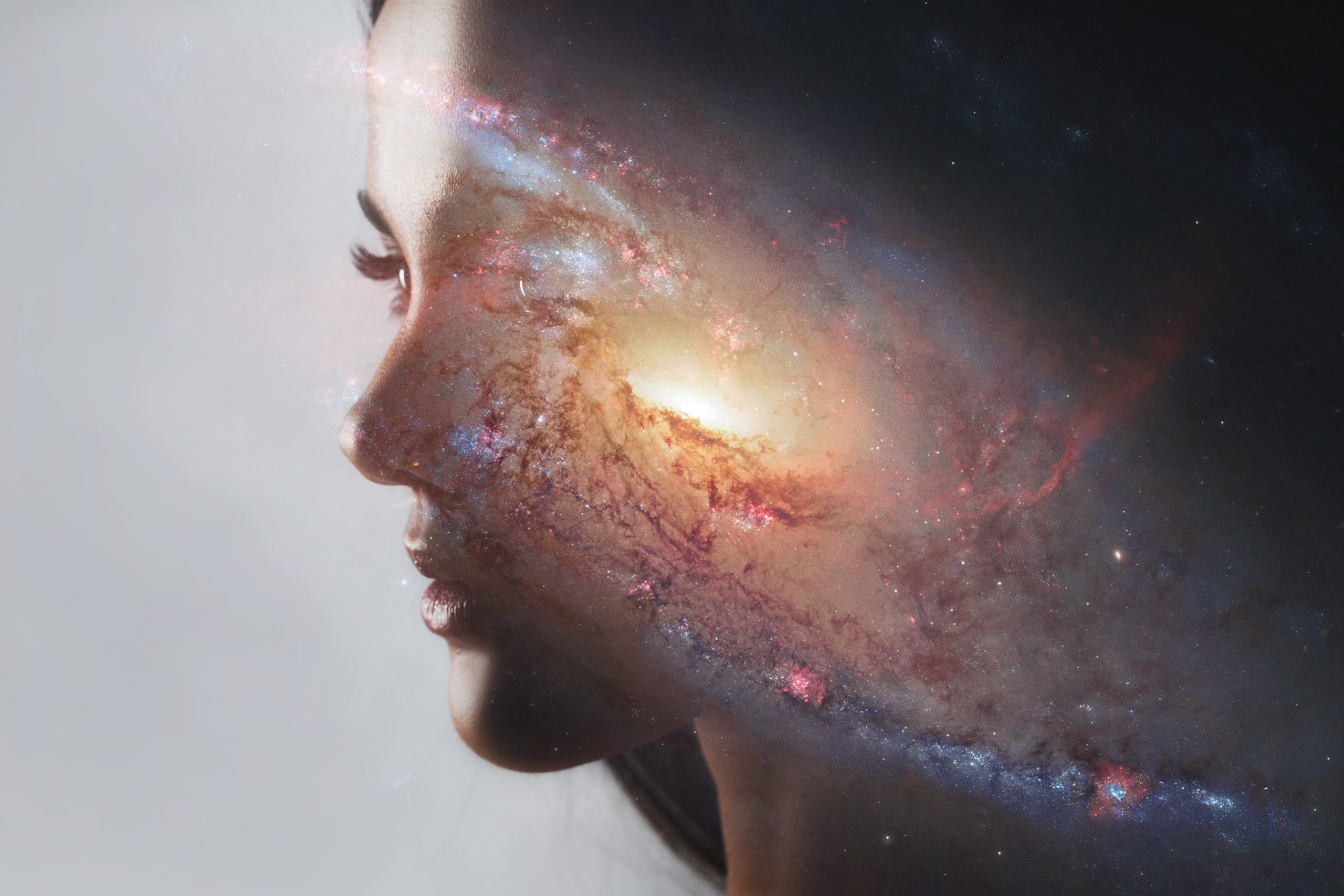
Despite consciousness being a “hard problem”, we know enough to understand that repressed consciousness needs to be brought into conscious awareness.
Developing the whole personality not only cures neuroses and makes us feel better, but also enables us to function more effectively in all aspects of our lives; family, social and professional.
The question is, how do we know which part of the personality is split off and needs to be recovered? Jung also had an answer for that.
The Swiss psychoanalyst believed the unconscious psyche has a preconditioned symbol-making function that is specific to humankind as a whole.
Thought-Provoking Quote
“The separation into pairs of opposites is entirely due to conscious differentiation; only consciousness can recognize the suitable and distinguish it from the unsuitable and worthless. It alone can declare one function valuable and another worthless, thus favouring one with the power of the will while suppressing the claims of the other. But, where no consciousness exists, where the still un- conscious instinctive process prevails, there is no reflection, no pro et contra, no disunion, but simple happening, regulated instinctiveness, the proportion of life. (Provided, of course, that instinct does not encounter situations to which it is still unadapted. In which case damming up, affect, confusion, and panic arise)…It would, therefore, be unavailing to appeal to consciousness for a decision of the conflict between the instincts. A conscious decree would be quite arbitrary, and could never give the will that symbolic content which alone can create an irrational settlement of a logical antithesis. For this we must go deeper; we must descend into those foundations of consciousness which have still preserved their primordial instinctiveness; namely into the unconscious, where all psychic functions are indistinguishably merged in the original and fundamental activity of the psyche.” [36]
~ Carl Jung, CW6, Psychological Types
Archaic symbols appear to us in dreams and images. But the archetypes can also appear in everyday life through “things that happen to one.” [37] Things that happen include calamities, misuse of narcotics such as alcohol, morphine, cocaine, and Freudian slips.
Jung also felt the archetypes show up in the personality of an individual as egoism, infantilism, paranoia, delusion, ‘sunk in thought’, intellectually one-sided, melancholy, taking things too seriously, hypochondria and many other complexes.
Jung’s study of synchronicity suggests that individualised psychological events, such as dreams and visions, often appear as patterns of meaningful coincidence. The need for symbolic meanings became the central tenant of Jung’s work.
The Swiss also said:
Thought-Provoking Quote
“..certain phenomena of simultaneity or synchronicity seem to be bound up with the archetypes.” [38]
~ Carl Jung, Synchronicity
Jung attributed destructive behaviours and neuroses to a “loss of soul.” In his 1923 book, Psychological Types, he identifies the soul as an expression of “God”. He also provides a psychological explanation to the writings of Meister Eckehart’s impression of “God”.
Ancient Wisdom Alert
“As I came forth out of God, all things said, ‘There is a God!” That cannot now make me blessed, for therewith I conceive myself as creature. But in the breakthrough, when I will to stand free in the will of God, and also free of God as well, and all it works, even of God himself – then am I more than all creatures, then am I neither God nor creature: I am, what I was, and what I shall remain, now and evermore!”
~ Meister Eckehart
Jung explains:
Thought-Provoking Quote
“The coming forth signifies a becoming aware of the unconscious contents, and of unconscious energy in the form of an idea born of the soul. This is an act of conscious discrimination from the unconscious dynamis, a severence of the ego is subject, from God (i.e. the unconscious dynamis) as object. In this way God “becometh”. When, through the “breakthrough”, i.e through a “cutting off” of the ego from the world, and through and identification of the ego with the motivating dynamis of the unconscious, this severance is once more resolved, God disappears as objects and becomes the subject which is no longer distinguished from the ego, i.e. the ego as a relatively late product of differentiation, becomes once more united with the mystic, dynamic, universal participation.” [39]
~ Carl Jung, CW6, Psychological Types
In short, the gods of mythology, and the God of the Bible, reflect archetypal energies that make “man in his image.” Ancient mythology is, therefore, a highly prized asset which can and should be, used to develop the whole personality.
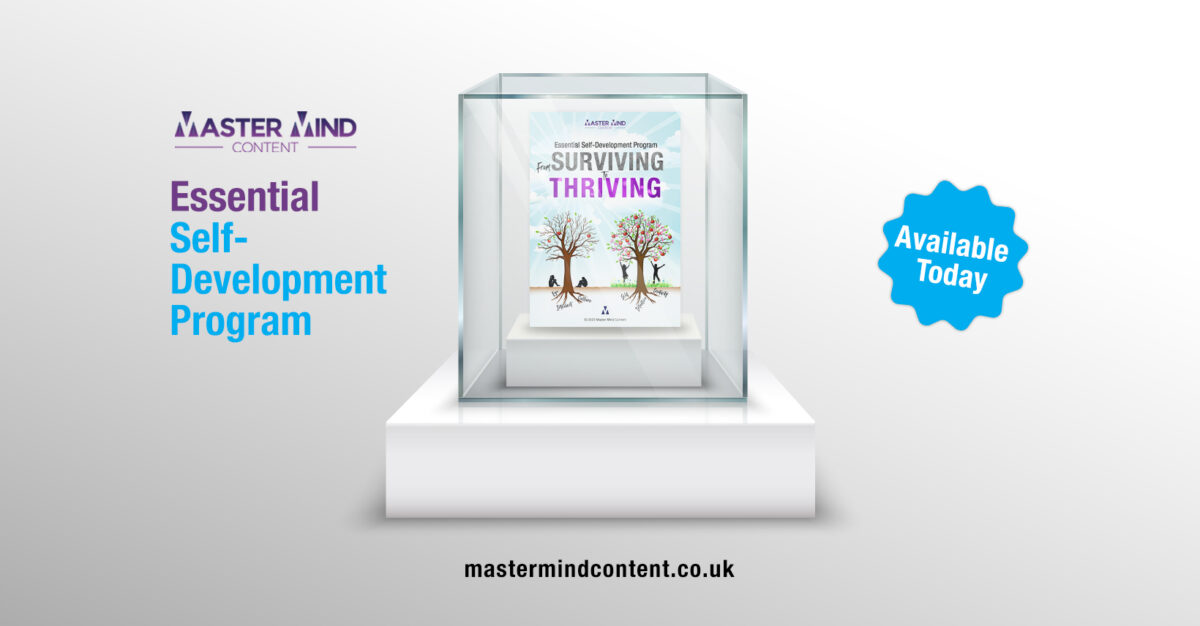
[1] Stanislav Grof, The Holotropic Universe, p.3 Kindle Loc 115 (1993)
[2] Ibid p.5 Kindle Loc 151
[3]Definition of Consciousness, Oxford English Dictionary
[4] Wilhelm Reich, The Function of the Orgasm
[5] Rupert Sheldrake, The Presence of the Past, p.123, Kindle Loc 1779, (1988)
[6] Robert Sapolsky, Behave: The Biology of Humans at Our Best and Worst p.197 (2017)
[7] Brain Basics: Genes At Work In The Brain, NIH
[8] Robert Sapolsky, Behave: The Biology of Humans at Our Best and Worst, p.197, (2017)
[9] Ibid, p.255
[10] Ibid, p.259
[11] Ibid, p.174
[12] Bruce Lipton, Biology of Belief, Kindle Loc 116 (2205)
[13] Carl Jung: Vol.9 Part 1, The Archetypes and the Collective Unconscious, para 3, 2nd ed, transl. R. F. C. Hull, (1968)
[14] Ibid, para 91
[15] Ibid, para 88
[16] Stanislav Grof, The Holotropic Universe, p. 5 Kindle Loc 157 (1993)
[17] David Bohm, Wholeness and the Implicate Order (1980)
[18] Ibid, p.13
[19] Stanislav Grof, The Holotropic Universe, p.10 Kindle Loc 223 (1993)
[20] Rupert Sheldrake, The Presence of the Past p.161, Kindle Loc 2257, (1988)
[21] Ibid p.160, Kindle Loc 2240-2245
[22] Ibid, p.17, Kindle Loc 309
[23] Ibid, p.12, Kindle Loc 243
[24] Ibid p.160, Kindle Loc 2273
[25] Paul Weiss, Principles of Development, p.291, (1939)
[26] David Bohm, Wholeness and the Implicate Order, pp.67-68 (1980)
[27] Ibid, pp.66-67
[28] Rupert Sheldrake, The Presence of the Past, p.21, Kindle Loc 373
[29] Carl Jung, CW6 Psychological types, p.423, (1923)
[30] Carl Jung: The Archetypes and the Collective Unconscious, para 3, Vol.9 Part 1, 2nd ed, transl. R. F. C. Hull, (1968)
[31] Stanislav Grof, The Holotropic Universe, p.24 Kindle Location 499 (1988)
[32] Ibid p.25 Kindle Location 525
[33] Ibid, p.25 Kindle Location 525
[34] Ibid, p.18 Kindle Loc 382
[35] Carl Jung, CW 11, Psychology and Religion, p.15. para 22, (1958)
[36] Carl Jung, CW6, Psychological Types, pp.142-143, (1923)
[37] Ibid, p.427
[38] Carl Jung, Synchronicity, p.30, (1950)
[39] Carl Jung, CW6, Psychological Types, p.316 (1923)
